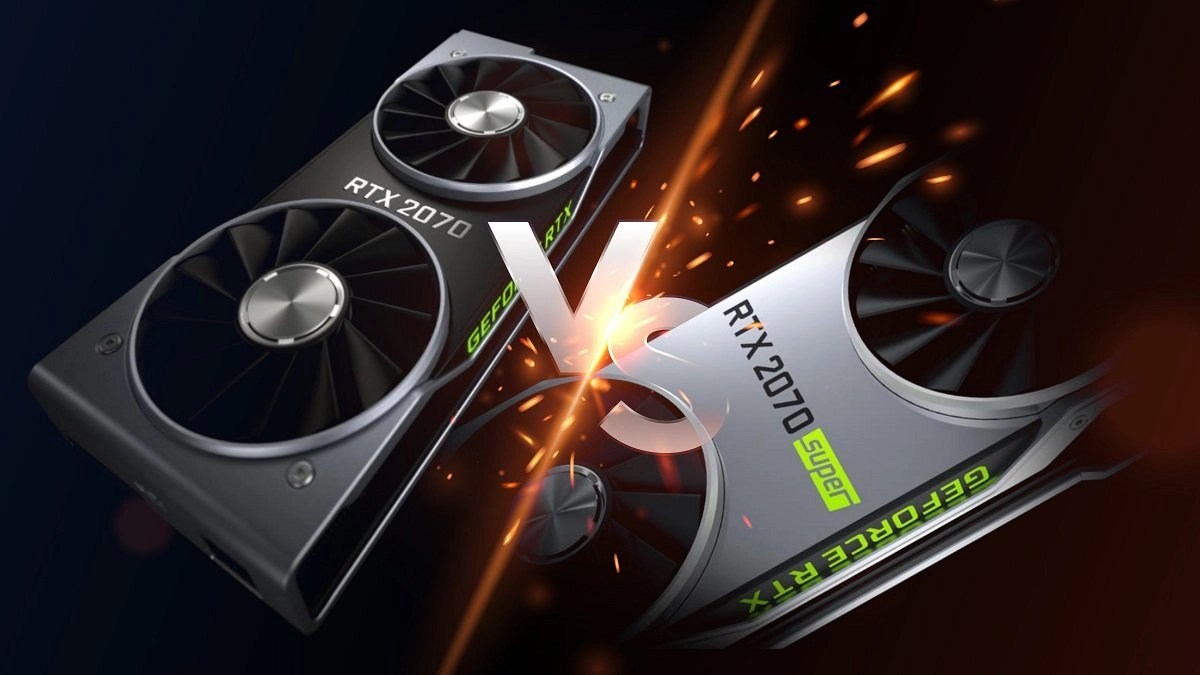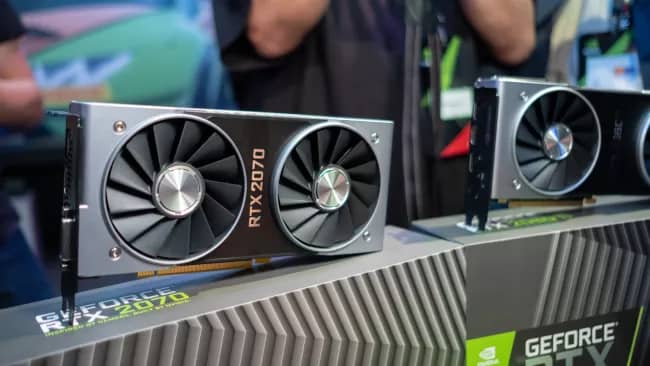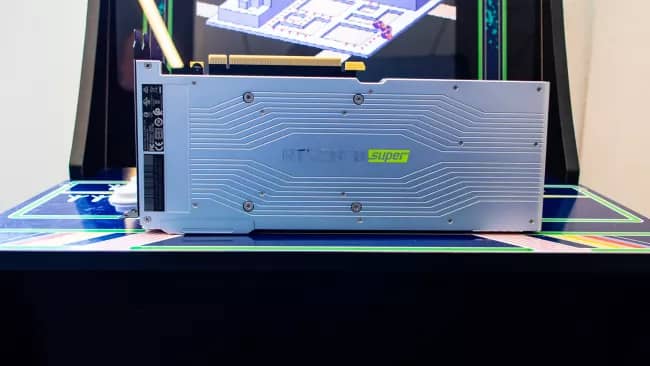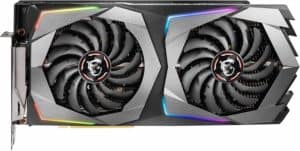Nvidia GeForce RTX 2070 Super Vs RTX 2070
In this article, we’re going compare the new Nvidia GeForce RTX 2070 Super Vs RTX 2070 to see if the new Super card is a worthy upgrade.
Author:Daniel BarrettMay 30, 202221.7K Shares544.2K Views

Nvidia is launching a new range of Super RTX graphics cards that promise performance upgrades over the existing RTX cards. We’re looking at if the RTX 2070 Super is worth buying or if the original RTX 2070 offers better. This article will compare the new Nvidia GeForce RTX 2070 Super Vs RTX 2070to see if the new Super card is a worthy upgrade.
Design
Firstly, both the 2070 and the 2070 Super are built on Nvidia’s relatively new Turing design. That means, in terms of the fundamental design, mindset and design protocols, there’s little if anything to separate them.
What Is the Turing design?
Firstly, it separates the GPU’s overall workload, allowing AI functions to be handled by dedicated tensor cores and ray-tracing functions by specialized RT cores.
What does that gain you? Dedication, focus, fluidity, and speed. If individual, dedicated cores deal with separate functions, there’s less linear hanging around in the processing of visuals and gameplay—fluidity and smoothness increase. And secondly, the Turing architecture features Turing NVENC. That’s a new, faster way of encoding data so that streamers don’t need to buy a devoted streaming machine. Speed, processing power, fluidity and eyeball-melting potential. That’s the promise of the Turing design.
The downside is that the gamingindustry has yet to fully accept the Turing design and its opportunities. This results in the scarcity of games that has the design. It’s the same as using a sports car to run 40. There will be games that wow you by getting the most out of the Turing design.
Nvidia RTX 2070 Super vs RTX 2070: Price
The Nvidia GeForce RTX 2070 launched in October 2018 at $499 (about £380, AU$690), while the Nvidia-made Founders Edition cost $599 (£569, AU$899).
Considering the power elevation, the fact the RTX 2070 Super has launched at the same price as the original RTX 2070 makes the new card seem like excellent value. However, price drops for the original RTX 2070 are expected now that the new card has been launched. In fact, the RTX 2070 Super completely replaces the RTX 2070. This means there may be some enticing offers for the older card as retailers clear their stock.
Also, for a limited time, you will get two games. The Control and Wolfenstein: Youngblood. These are worth around $90, with a purchase of the RTX 2070 Super, making it a better value.
Nvidia RTX 2070 Super vs RTX 2070: Performance
The performance difference between the two cards was more visible with Metro Exodus, with the RTX 2070 scoring 60.8 FPS compared to the RTX 2070 Super’s 69.4 FPS.
Generally, we see around a 10 FPS performance boost between the cards for most games. That’s probably not a large enough performance increase to justify an upgrade from the RTX 2070. That card remains a good enough performer, so the extra 10 FPS the new card brings won’t seem ground-breaking. However, if you want to upgrade from an older card, it makes sense to go with the improved RTX 2070 Super.
Clock Speed
2070
- Base Clock – 1410MHz
- Boost Clock – 1620MHz
2070 Super
- Base Clock – 1605MHz
- Boost Clock – 1770MHz
Memory Clock Speeds
2070: 1750MHz, 14000MHz effective2070 Super: 1750MHz, 14000MHz effective
The 2070 Super seems to have significant gains in both base and boost clock. But, the memory clock speeds are identical. Also, the considerable improvements feel a little less significant if you run the math – roughly a 14% increase in base clock speed and around a 9% increase in boost clock speed.
2070
- Tensor Cores – 288
- RT Cores – 36
2070 Super
- Tensor Cores – 320
- RT Cores – 40
Cooling
Given that they’re built on the same architecture by the same manufacturer, these cards’ fans and cooling options are also very similar.
On arrival, 2070 should run up to 70-80 degrees (maximum official figure, 79 degrees) under heavy load. While the 2070 Super hardly surpasses 71 degrees, even under intensive load (maximum officially recorded, 74 degrees). There will be varying factors to this—this is dependent on the build of your set-up and the airflow inside. Plus, whether or not you already have additional fans or water-cooling systems in place when you fit your card.
If you want to overclock your system, the cooler your GPU is, the more headroom you have to boost it. Aftermarket angled fans and water-cooling systems will help you lower the maximum temperature of your unit and your system.
While 2070 has a maximum fan noise of 47.7dB, the 2070 Super slices a whole 2.1dB off that, at just 45.6dB. The TDP on 2070 is 175W, while the 2070 Super carries a TDP of 215W.
Dimensions
It’s always worth being sure of the dimensions of your card before you pay for it, ship it, and try to fit it. Getting that wrong is fundamentally a problem, not to mention a bit embarrassing.
As with the base and boost speed results, there are significant increases in the Super’s core numbers. But run the math, and they show just an 11% increase in tensor and RT cores.
2070
- Length – 9”
- Width – Dual slot
2070 Super
- Length: 9”
- Width – Dual slot
Ray Tracing
When it comes to ray tracing, both the 2070 and the 2070 Super are far ahead, waiting for the industry to catch up and use the Turing architecture to its full potential.
The industry has yet to get there, meaning if it’s ray tracing that’s determining your choice of GPU, you’re probably best advised to wait until the price comes down, as it probably must. But let’s see what you get in terms of cores for ray tracing in the Turing architecture of both cards.
2070
- Tensor Cores – 288
- RT Cores – 36
2070 Super
- Tensor Cores – 320
- RT Cores – 40
Poignantly, you get more of a core differential for AI. Which might be of more immediate use to you than you do for ray tracing.
Editor’s picks:

Daniel Barrett
Author
Daniel Barrett is a tech writer focusing on IoT, gadgets, software, and cryptocurrencies. With a keen interest in emerging technologies, Daniel offers expert analysis and commentary on industry trends. Follow him for authoritative insights into the latest tech innovations.
Latest Articles
Popular Articles


